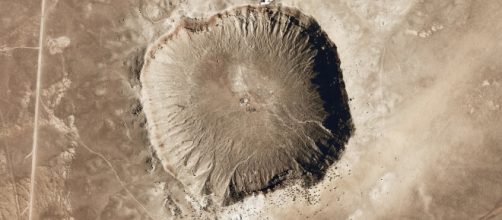Three NEO (Near Earth Object) impacts with earth are familiar to all scientifically literate people. The dinosaur killing Chichulub (Mexico) asteroid (which only sped up their extinction) which hit 66 million years ago; the 1908 Tunguska (Siberia) blast event which was most probably an airburst devastated 2,000 sq. km (770 sq. miles) of forest but probably killed no one because of the remote location; and the February 2013 Chelyabinsk asteroid which caused mostly broken windows from it’s 19 km/sec sonic blast.
But how do experts determine how likely such impacts are and predict how much damage each might cause?
Obviously those three events so well-known to the general public range from devastating to merely scary.
NEO collisions in history
It is important to realize just how recently no one, even scientists, believed there was such a thing as a meteorite (an NEO is a meteor in the air and a meteorite if it hits the surface) and there was vast prejudice against accepting the idea right into the 20th century. This is a very young science - no one believed peasants who reported meteorite impacts and Ernst Florens Chladni (German physicist) first wrote about meteorites being rocks from space in 1794.
It wasn’t until 1960 that geologist Eugene Shoemaker conclusively proved meteor crater in Arizona (U.S.A.) was caused by an asteroid impact - he is the same Shoemaker credited as co-discoverer of the Shoemaker-Levy-9 comet which collided so spectacularly with Jupiter in 1994.
And the question of whether Lunar craters were due to volcanic action or meteor impact wasn’t finally settled until the Apollo missions. Shoemaker’s ashes are buried on the moon, the only such burial.
NEO collision danger
Today it is accepted (except among some religious sects which don’t even believe the earth is millions of years old) that meteors hit the earth and can cause great damage. The Torino and Palermo scales are the way NEO threats are classified with the Palermo being a more detailed analysis less useful to non experts.
The Torino scale (first proposed in 1995) is easy to understand, it simply rates NEOs on a scale of 0 to 10 based on a combination of likelihood of impact with Earth and their potential energy (danger) with zero being both very unlikely and very small or slow and ten being very likely and extremely dangerous.
One important thing to remember about the Torino scale is that it only rates NEOs which might possibly hit the earth in the next hundred years. A cat. 8 NEO (Tunguska and Meteor Crater events) would occur between once in 50 and once in 2,000 years and cause major but localized destruction. Chichulub would have been rated a 10 and those occur on average less than once in 100,000 years - unfortunately the last such event was probably 66 million years ago. There are currently no NEOs rated higher than zero danger (Chelyabinsk).
The Palermo scale is logarithmic and also combines both danger and probability and is more like the base-10 Richter earthquake scale but the specifics are meaningless to anyone without advanced scientific and mathematical training.
The far less well-known Rio scale is very similar to Torino but is promoted mostly by SETI (alien search organization).
There are some estimates including one by Shoemaker that a 10 megaton asteroid impact occurs almost every year. The theory is that since many would land in water or sparsely inhabited areas they go unnoticed.
NEO impact most likely and most scary scenario
Although large impact events are rare consider that even a relatively small asteroid impacting one of the world’s several ancient super volcano giant calderas. Some of these are at relatively high risk or eruption and even a relatively small meteor impact could trigger a catastrophic event.
The Yellowstone super volcano crater was approximately 1500 sq. mi. in area, it erupts about every 500,000-900,000 years - the last was 630,000 years ago.

